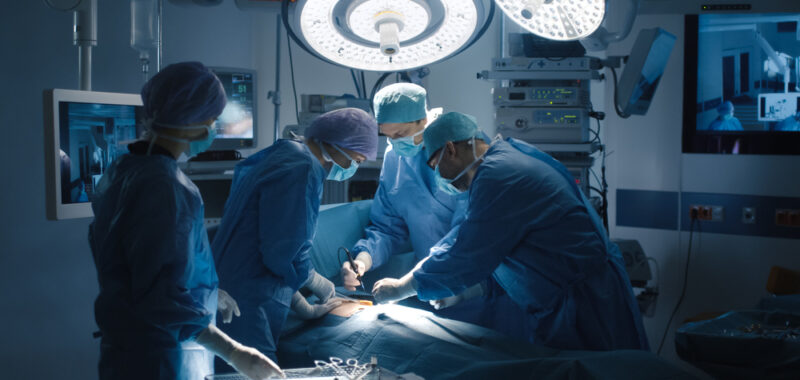With an expected 80 percent increase in demand for spinal surgery by 2060, particularly among older patients, the need for advanced technology driving personalized treatment is clear. Achieving optimal spine outcomes while deriving critical data that facilitates continuous improvement is limited in the current state by operating room technology narrowly focused on optimizing safe screw placement. While this is a valuable capability, integrating more advanced surgical navigation and artificial intelligence should help address the complexities of spinal care while also serving as a tool capable of collecting data and providing real-time insights.
Challenges in achieving outcomes associated with optimal alignment
Achieving the ideal alignment in spinal surgery is influenced by numerous variables, including hip flexibility, soft tissue stiffness, and balance considerations related to neuropathy, myelopathy, and aging. The equation for achieving correct alignment is intricately tied to individual characteristics, emphasizing the need for a nuanced approach. Current surgical navigation systems have their limitations—registration of anatomy and imaging are linked to a singular event and aren’t representative of how a spine will move in a three-dimensional world. These systems often fall short in providing the real-time data necessary for adjusting surgical plans on the fly.
Limitations of current intraoperative techniques
Intraoperative alignment techniques that provide feedback during surgery rely on 2D multiplanar acquisitions via fluoroscopy, a single intraoperative CT, or synthesized fluoroscopic imaging. Despite their contributions to acquiring intraoperative information, these methods may be time-consuming, costly, and disruptive to the operative workflow. They also expose both the patient and surgical team to additional ionizing radiation, with potential short- and long-term adverse health effects. The lack of continuous data capture during these procedures limits the ability to make informed, real-time decisions that could improve patient outcomes without disruption.
Digitized operating rooms
In the near future, we will benefit from a fully digitized operating room where advanced technologies provide a digital twin of the human anatomy. This will give surgeons a detailed visualization of tissues and bones, allowing for a more comprehensive understanding of the interplay between anatomical factors and enabling the continuous collection of critical data throughout the procedure. This ensures a more precise and personalized execution of the surgical plan, adapting to the patient’s unique physiological responses in real time.
We know that achieving an optimal balance extends beyond mere spinal alignment. Patient factors, including core strength, bone quality, and soft tissue condition, come into play to the extent that a minor misalignment may be inconsequential if the patient’s musculature is well-conditioned. Digital twin modeling allows us to visualize these contributing factors with high-quality, real-time imaging and to derive detailed data on how these factors might influence surgical outcomes. This allows us to anticipate how a patient’s unique physique, muscle capacity, and condition might respond to alignment changes.
Consider a scenario where a patient with painful lumbar scoliosis has significant core muscle atrophy. Simply shifting them to a new alignment without addressing these factors could risk failure. Should we precondition the patient through targeted physical therapy to strengthen specific muscle groups before making a radical alignment change? By modeling in advance and deriving data on the patient’s muscle condition and potential response to surgery, we can identify necessary interventions. This ensures that the pre-operative plan not only reflects comprehensive considerations but is also tailored to the patient’s unique physiology for the best possible surgical outcome.
Real-time adaptation and execution
A surgeon’s pre-operative plan is necessary, but tissue and bone visualization tools can help refine and adapt the approach in real time, ensuring a more precise and personalized execution. This transition from a conceptual framework to an informative, data-driven intraoperative approach marks a significant advancement in optimizing both pre-operative planning and post-operative data, opening a new realm of understanding for spinal surgery outcomes.
Enhancing data quality and depth
Enhancing the quality and depth of the data we can collect from surgery is imperative for a more comprehensive understanding of patient outcomes and the fortification of the American Spinal Registry. This registry collects procedural data, post-operative data, and patient-reported outcome measurements. It relies on voluntary participation and manual data entry, often capturing outcomes subjectively.
The integration of advanced navigation and imaging technologies, such as light field with real-time data capture, will supplement the subjective data with new, objective data to increase the overall understanding of a patient’s unique post-operative situation and outcome. This stands to elevate the quality of information to provide a data-driven and measurable account of surgical procedures while also populating data to inform future preoperative planning and patient outcomes.
Objective patient outcomes
Patient-reported outcomes are the primary metric for gauging the success of spinal interventions. However, this approach is subjective and makes it challenging to identify trends over time. As we operate in a digitized operating room, integrating sensor technologies and patient wearables will become necessary. This shift will allow us to capture the full picture of the digitized procedure, along with quantifiable, objective patient outcomes. This provides a comprehensive evaluation of the long-term efficacy of spinal procedures and allows us to collect more detailed and objective data, ultimately contributing to enhanced patient care.
A new era in patient care
In navigating the path to a digitized operating room, we can expect to gain a deeper understanding of the patient condition. By capturing objective patient outcomes and refining the entire spectrum of pre-, intra-, and post-operative data, the future of health care is being reshaped within an increasingly digitized world. The integration of real-time imaging and cutting-edge tissue visualization technologies is set to revolutionize the operating room and reshape our approach to patient care.
Steven D. Glassman is an orthopedic surgeon.

